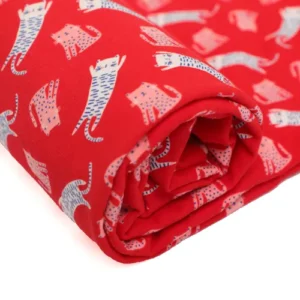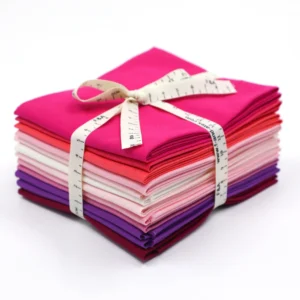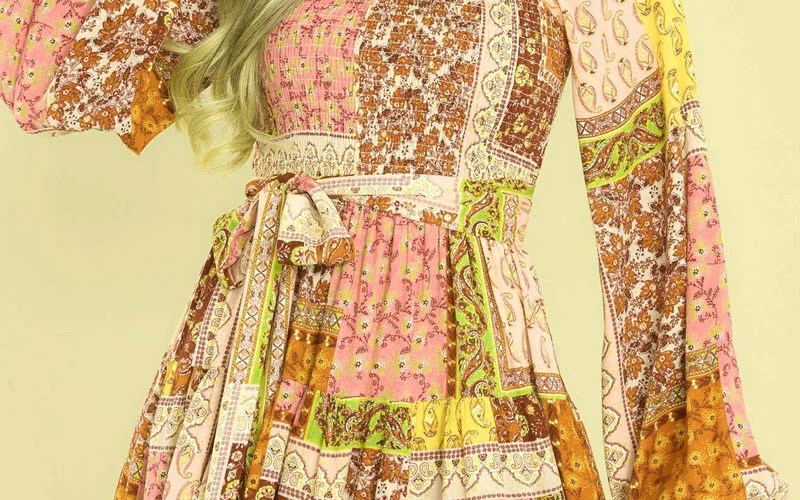
Quilting fabric has evolved beyond its traditional uses in blankets and homes, quilting fabric for garments, is a popular choice for creating unique and stylish garments.
Its rich textures, vibrant colors, and diverse patterns have captured the attention of designers and fashion enthusiasts alike.
What is Quilting Fabric?
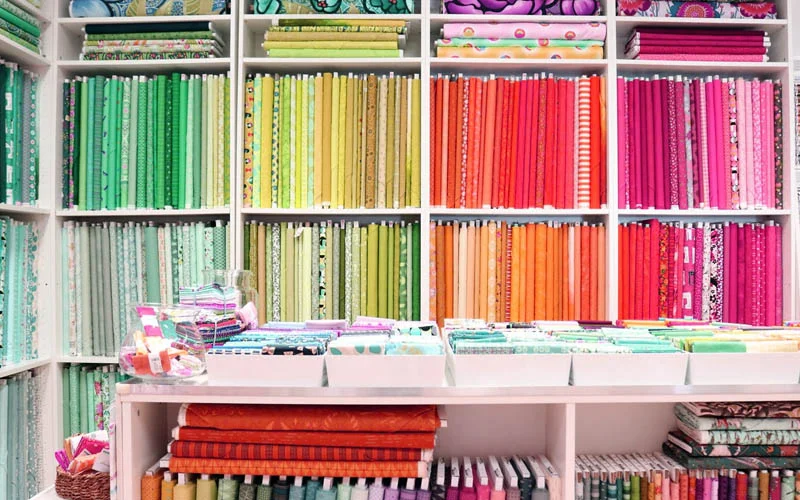
Definition and Characteristics
Quilting fabrics are typically thicker and more durable than standard fabrics, often made from materials like cotton, silk, and wool.
These fabrics are woven tightly to withstand the quilting process, which involves stitching layers together.
Types of Quilting Fabrics
Quilting fabrics come in various types, each offering different textures, weights, and patterns.
The most common types include cotton, silk, wool, blended, and synthetic fabrics, each chosen based on the specific needs of the garment.
Types of Quilting Fabrics
To understand quilting fabric for garments, first understand what tapes are available.
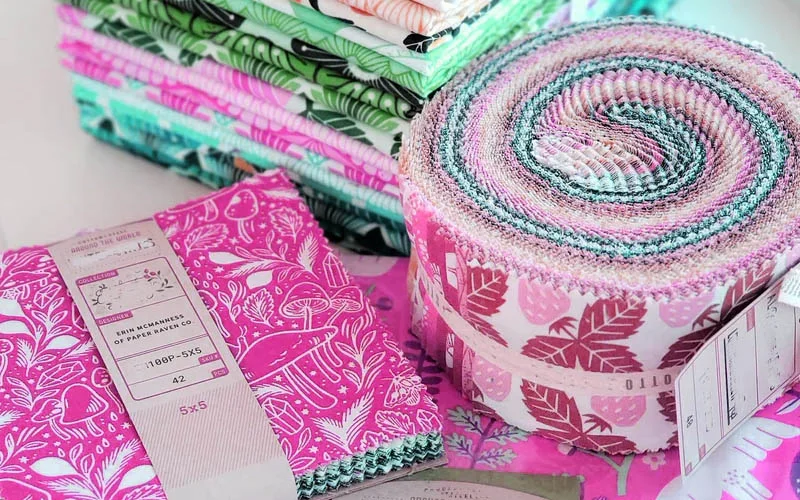
Cotton Fabrics
Cotton is the most popular choice for quilting due to its softness, breathability, and ease of use.
It’s versatile and available in various prints and colors, making it ideal for both casual and formal garments.
Silk Fabrics
Silk quilting fabrics add a touch of luxury to garments. They are lightweight, smooth, and have a natural sheen that makes them perfect for evening wear or special occasions.
Wool Fabrics
Wool provides warmth and texture, making it an excellent choice for winter garments. It’s durable and holds its shape well, often used in coats, jackets, and heavy skirts.
Blended Fabrics
Blended fabrics combine the qualities of different materials, offering the benefits of both. For example, cotton-polyester blends are common for their durability and ease of care.
Synthetic Fabrics
Synthetic fabrics like polyester and nylon are often used in quilting for their durability and resistance to wear and tear. They are also available in a wide range of textures and colors.
Which type of Quilting Fabric is used for Garments?
Quilting Fabric for Garments is typically lighter and softer than traditional quilting cotton.
Some popular types of quilting fabrics suitable for making garments include:
- Cotton Lawn: A fine, lightweight cotton fabric that is soft and breathable, making it ideal for blouses, dresses, and shirts.
- Cotton Voile: Similar to cotton lawn but even lighter and more sheer, voile is perfect for airy summer garments like dresses and skirts.
- Double Gauze: A soft, breathable fabric consisting of two layers of gauze. It is comfortable to wear and works well for dresses, tunics, and children’s clothing.
- Chambray: A lightweight cotton fabric with a denim-like appearance, chambray is suitable for shirts, dresses, and casual wear.
- Cotton Jersey: A stretchy, knit fabric that is comfortable and easy to wear. It’s often used for t-shirts, dresses, and casual garments.
- Cotton Poplin: A tightly woven fabric that is durable yet lightweight, making it a good choice for shirts, dresses, and skirts.
- Linen-Cotton Blends: Combining the breathability of linen with the softness of cotton, these blends are ideal for summer garments.
These fabrics offer the right balance of weight, drape, and comfort for making wearable items while still being versatile for quilting projects.
Choosing the Right Quilting Fabric for Garments
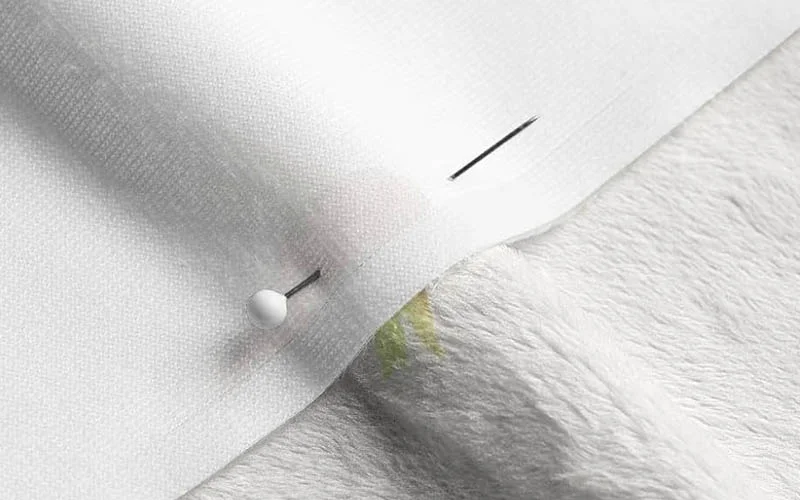
When choosing the right quilting fabric for garments, there are several factors to consider to ensure comfort, durability, and style. Here’s a guide to help you make the best choice:
1. Fabric Weight and Drape
- Lightweight Fabrics: For garments that need to be airy and comfortable, such as summer dresses or blouses, lightweight fabrics like cotton lawn, voile, and double gauze are ideal. These fabrics drape well and feel soft against the skin.
- Medium-weight Fabrics: For more structured garments like shirts, skirts, or lightweight jackets, medium-weight fabrics such as chambray, cotton poplin, or linen-cotton blends offer the right balance between structure and flexibility.
2. Comfort and Breathability
- Natural Fibers: Fabrics made from natural fibers like cotton and linen are breathable, absorb moisture, and are gentle on the skin, making them excellent choices for everyday wear.
- Blended Fabrics: Blends like linen-cotton or cotton-polyester offer the benefits of both fibers, such as added durability or wrinkle resistance, while still being comfortable to wear.
3. Ease of Care
- Washability: Consider how easy the fabric is to care for. Cotton fabrics are generally easy to wash and maintain, while some specialty fabrics may require more careful handling.
- Colorfastness: Ensure that the fabric is colorfast and won’t fade or bleed during washing, especially for garments that will be worn and washed frequently.
4. Pattern and Design
- Prints and Solids: Quilting fabrics often come in a wide variety of prints and colors. When choosing for garments, consider whether the print scale and design suit the style of the clothing. Smaller prints are often more versatile for garments, while large prints can make a bold statement.
- Coordinate with Patterns: Choose fabrics that complement the garment pattern or design you plan to sew. For example, simple, classic designs work well with solid or subtly patterned fabrics, while more elaborate garment designs may pair better with understated prints.
5. Stretch and Flexibility
- Knits vs. Wovens: For garments that require stretch, such as t-shirts, leggings, or fitted dresses, opt for cotton jersey or other knit fabrics. Woven fabrics like chambray or poplin are better suited for garments that don’t require much stretch.
6. Intended Use
- Casual vs. Formal Wear: Choose fabrics that match the intended use of the garment. Casual wear calls for comfortable, easy-to-wear fabrics like cotton and chambray, while more formal garments may benefit from fabrics with a finer weave or a slight sheen.
7. Seasonal Considerations
- Summer vs. Winter: Lightweight, breathable fabrics like voile and linen-cotton blends are ideal for summer garments, while heavier or lined fabrics like flannel or double gauze can provide warmth for cooler weather.
By considering these factors, you can select the right quilting fabric that not only enhances the style and comfort of the garment but also ensures it holds up well over time.
Tips for Working with Quilting Fabric for Garments
There are many things to pay attention to when using quilting fabric for garments.
Cutting Techniques
Accurate cutting is crucial when working with quilting fabrics. Use sharp scissors or rotary cutters to ensure clean edges and precise shapes.
Sewing Tips and Tricks
When sewing quilting fabrics, use the appropriate needle and thread for the fabric type. Consider using a walking foot on your sewing machine to handle thicker layers.
Finishing Touches
Finishing touches like hemming, pressing, and adding embellishments can enhance the final look of the garment. Pay attention to detail to achieve a professional finish.
Practical Applications of Quilting Fabric for Garments
Quilting fabric for garments can be creatively adapted for a wide range of garments, offering both style and functionality. Here are some practical applications of quilting fabric for garments:
Blouses and Shirts
Cotton Lawn and Voile: These lightweight and breathable fabrics are perfect for making comfortable blouses and shirts. Their soft texture makes them ideal for garments that sit close to the skin.
Chambray: A great alternative to denim, chambray is perfect for casual shirts that have a structured yet comfortable feel.
Dresses
Double Gauze: Ideal for summer dresses, double gauze provides a soft, airy feel that drapes beautifully. It’s especially popular for making children’s dresses and casual, flowy adult dresses.
Cotton Poplin: This fabric’s durability and slight stiffness make it suitable for more structured dresses that require a clean, crisp appearance.
Children’s Clothing
Double Gauze and Cotton Lawn: These fabrics are gentle on the skin, making them ideal for children’s garments like dresses, tops, and rompers.
Quilting Cotton: Durable and easy to sew, quilting cotton is perfect for making sturdy children’s play clothes, such as overalls, skirts, or simple dresses.
By exploring these practical applications, you can make the most out of quilting fabric for garments, transforming them into garments and accessories that are functional, stylish, and unique.
FAQs
Can I use standard quilting cotton to make garments?
Yes, but with considerations. Standard quilting cotton can be used for garments, especially for more structured items like skirts, shirts, and aprons. However, it tends to be stiffer than fabrics typically used for clothing, so it’s best suited for garments that don’t require much drape or flexibility.
What types of quilting fabric are best for lightweight garments?
Cotton Lawn, Voile, and Double Gauze are excellent choices for lightweight garments. These fabrics are soft, breathable, and have a nice drape, making them ideal for summer dresses, blouses, and children’s clothing.
How do I know if a quilting fabric is suitable for a garment?
Check the weight and drape: Hold the fabric up and see how it falls. If it drapes nicely and feels comfortable against your skin, it’s likely suitable for garments. Additionally, consider the fabric’s weight—lighter fabrics are better for airy, flowing garments, while heavier fabrics work for structured pieces
Do I need to pre-wash quilting fabric before sewing garments?
Yes. It’s essential to pre-wash quilting fabric to prevent shrinkage after the garment is made. Quilting cotton and other natural fibers tend to shrink when washed, so pre-washing ensures that your finished garment retains its intended size and shape.
Can I use quilting fabric for stretchy garments like t-shirts?
Only if it’s a knit fabric. For stretchy garments, you’ll need a fabric with stretch, like cotton jersey. Standard quilting cotton doesn’t have the stretch required for items like t-shirts, leggings, or fitted dresses.
Conclusion
Quilting fabric for garments offers a unique blend of durability, versatility, and aesthetic appeal, making them a valuable addition to any wardrobe.
Whether used in everyday clothing or special occasion garments, these fabrics provide endless possibilities for creativity and expression.
As the fashion industry continues to evolve, quilting fabrics are likely to play an even more prominent role in garment design.

